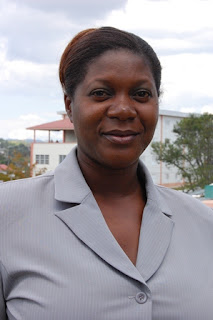Diabetes mellitus is a condition in which the body does not properly process food for use as energy. Most foods consumed are changed into sugar or glucose for our bodies to get energy for activities such as breathing, walking, talking, and so on. The pancreas, also called the 'long liver', makes the hormone insulin to get glucose out of the blood and into the cells. With diabetes, the pancreas is either not making enough insulin or the insulin that is made is not being used well due to the amount of fat surrounding the cells. This causes sugar in the form of glucose to build up in the blood.
When the sugar or glucose in the blood is above normal levels, the following symptoms may occur: increased hunger, increased thirst, frequent urination (especially at nights), involuntary or unexplained weight loss, abdominal pain, weakness and fatigue.
Diabetes classifications:
Type 1, juvenile or childhood diabetes is usually diagnosed in children, teens or young adults. It occurs from the malfunction or destruction of the beta cells in the pancreas which results in the lack of, or depletion in the secretion of insulin. A person with Type 1 diabetes has to use insulin injections everyday to live.
Type 2 or adult-onset diabetes occurs as a result of insulin resistance and impaired beta cell function with relative insulin deficiency. It usually occurs in adulthood, but due to the current trend of high obesity rates, teens and young adults are being diagnosed with Type 2 diabetes.
Gestational diabetes develops during pregnancy between the 24th and 28th week when the body's demand for insulin increases.
Other specific types of diabetes may be as a result of specific conditions, such as medications, surgery, infections and pancreatic diseases.
Pre-diabetes is defined as impaired glucose tolerance or impaired fasting glucose, otherwise called 'borderline' diabetes.
Risk factors
The risk factors for the development of diabetes include: pre-diabetes, obesity, waist circumference for women greater than 30 inches and for men greater than 35 inches, insufficient physical activity and increasing age.
Based on the Jamaica Healthy Lifestyle Survey 2008, 224,712 Jamaicans between the ages of 15 and 74 years have diabetes which is almost 14 per cent of the Jamaican population. About 53,706 Jamaicans do not know they have diabetes. Diabetes is the second leading cause of death in Jamaica.
Diabetes has no cure but can be controlled with diet, exercise/physical activities and medications along with self monitoring such as daily blood glucose checks and foot care.

No comments:
Post a Comment